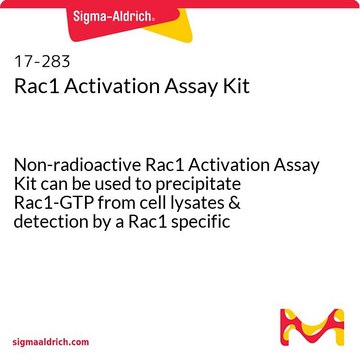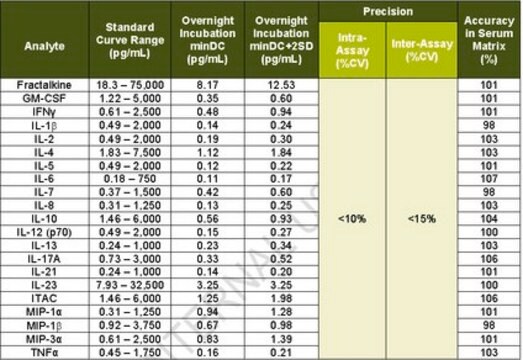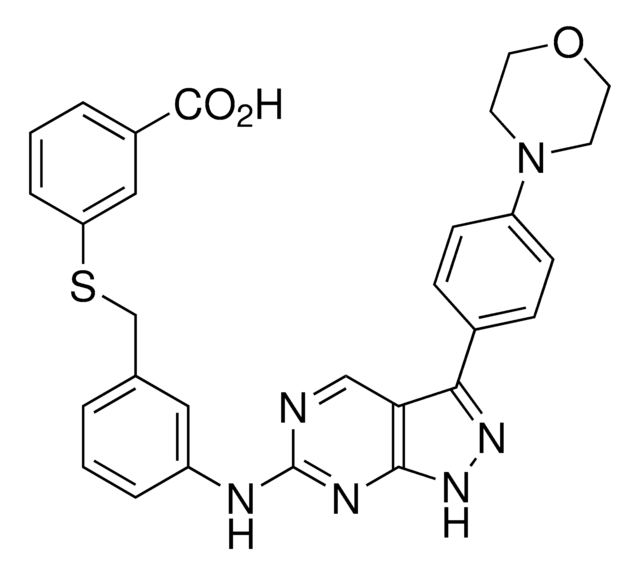17-441
Rac1/Cdc42 Activation Assay Kit
The Rac1/Cdc42 Activation Assay provides an effective method for detecting Rac & Cdc42 activity in cell lysates.
Synonyme(s) :
Rac1 activation assay
About This Item
Produits recommandés
Niveau de qualité
Espèces réactives
human, mouse, rat
Fabricant/nom de marque
Upstate®
Technique(s)
activity assay: suitable
affinity binding assay: suitable (G-protein)
Numéro d'accès NCBI
Numéro d'accès UniProt
Conditions d'expédition
wet ice
Informations sur le gène
human ... RAC1(5879)
Description générale
Spécificité
Anti-Rac1, clone 23A8: Species Cross-reactivity: Human, mouse and rat. Other species cross-reactivity unknown.
Anti-cdc42 Species Cross-reactivity: Human, mouse, rat and dog. Other species cross-reactivity unknown.
Composants
Anti-Rac1, clone 23A8, Catalog #05-389: One vial containing 250 μg of protein G purified mouse IgG2b in 250 μL of storage buffer (0.1 M Tris-glycine, pH 7.4, 0.15 M NaCl, containing 0.05% sodium azide).
Anti-cdc42, (mouse monoclonal IgG1) , Catalog # 05-542: One vial containing 50 μg of purified mouse IgG1 in 200 μL of 50% storage buffer (20 mM sodium phosphate, pH 7.5, 150 mM NaCl, 1.5 mM sodium azide containing, 1 mg/mL BSA) and 50% glycerol.
Mg2+ Lysis/Wash Buffer, 5X, Catalog # 20-168 : Two vials, each vial containing 18 mL of 5X MLB: 125 mM HEPES, pH 7.5, 750 mM NaCl, 5% Igepal CA-630, 50 mM MgCl2, 5 mM EDTA and 10% glycerol.
100X GTPγS, 10mM, Catalog # 20-176: One vial containing 50 μL of 10 mM GTPγS, 100X stock, in 50 mM Tris-HCl, pH 7.8, non-hydrolyzable analog of GTP. Sufficient to label 5 mL of cell lysates.
100X GDP, 100mM, Catalog # 20-177: One vial containing 50 μL of 100 mM GDP, 100X stock, in 50 mM Tris-HCl, pH 7.8. GDP (Guanosine 5′-Diphosphate) for in vitro labeling of G-proteins in the inactive form. Sufficient to label 5ml of cell lysates.
Qualité
Stockage et stabilité
Informations légales
Clause de non-responsabilité
Mention d'avertissement
Danger
Mentions de danger
Conseils de prudence
Classification des risques
Aquatic Acute 1 - Aquatic Chronic 2 - Eye Dam. 1
Code de la classe de stockage
10 - Combustible liquids
Certificats d'analyse (COA)
Recherchez un Certificats d'analyse (COA) en saisissant le numéro de lot du produit. Les numéros de lot figurent sur l'étiquette du produit après les mots "Lot" ou "Batch".
Déjà en possession de ce produit ?
Retrouvez la documentation relative aux produits que vous avez récemment achetés dans la Bibliothèque de documents.
Notre équipe de scientifiques dispose d'une expérience dans tous les secteurs de la recherche, notamment en sciences de la vie, science des matériaux, synthèse chimique, chromatographie, analyse et dans de nombreux autres domaines..
Contacter notre Service technique










